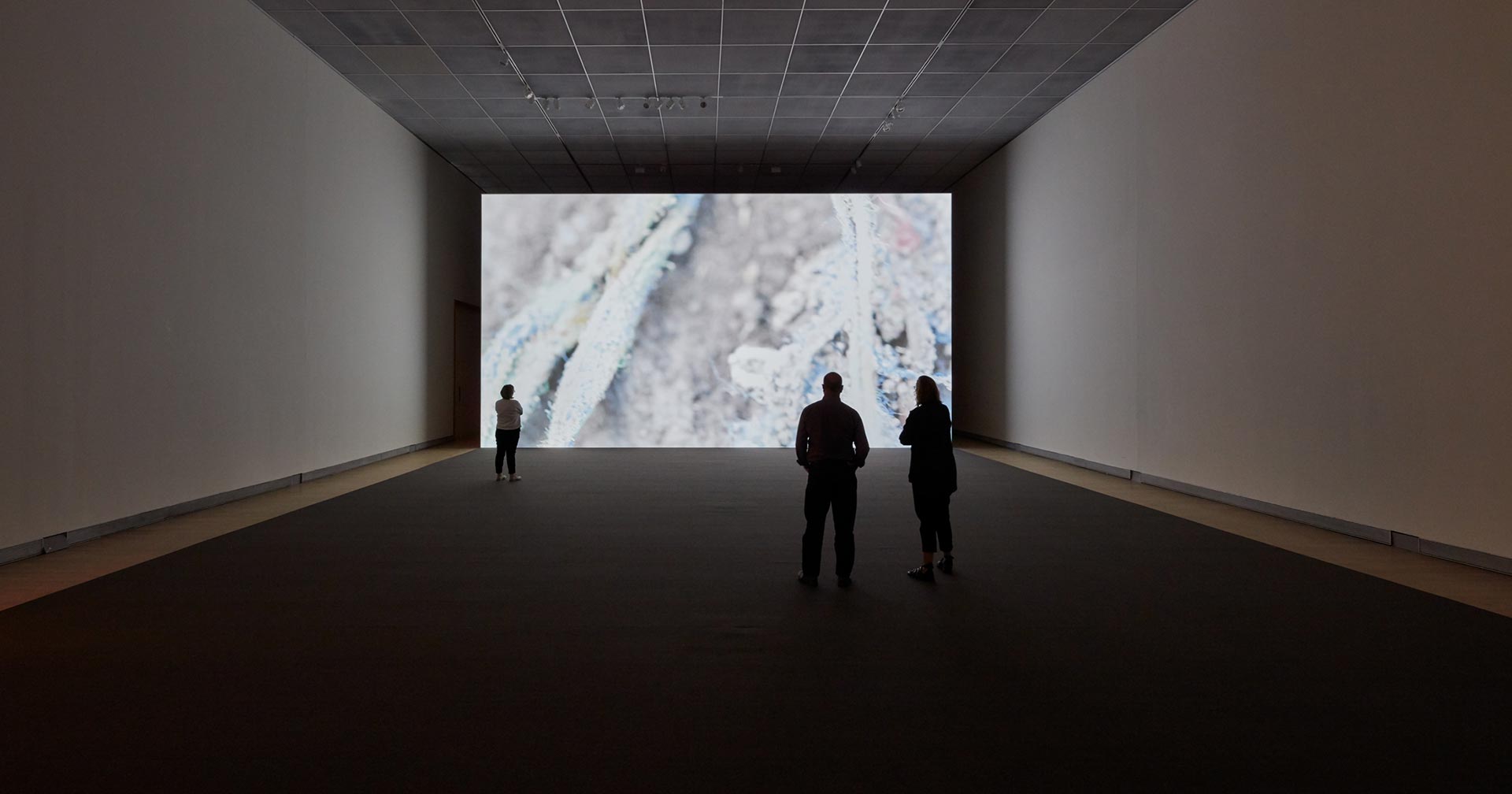
Galerie Stadt Sindelfingen, Sindelfingen, 2020

Rose Art Museum, Boston, 2019

De Pont Museum, Tillburg, 2021

La casa encendida, Madrid, 2019. Photo by Roberto Ruiz
From 1980 to 2000, Peru went through a time of a violent internal conflict which claimed almost 70,000 lives; these conflicts were waged by the guerilla groups Sendero Luminoso and Movimiento Revolucionario Túpac Amaru and the military, and ended in the fall of former president Alberto Fujimori. The conflict was dated by the Peruvian Truth and Reconciliation Commission in order to gauge the extent of the violence and to flag the period as a time of exceptional circumstances. Even twenty years later, however, the conflict has still yet to be fully reappraised. Sixteen thousand people are still missing and some six thousand mass graves have yet to be excavated.
The one hour-long video-installation shows a close-up of a mass grave shifting in and out of focus. Gaining sharpness, elements emerge from this field of earth, roots, and rocks, becoming discernable as fragments of bones, teeth, and frayed clothing. Archaeological markers and measuring tools point toward their uncovering, though the images blur distinctions between them and the landscape within which they are set. Awaiting forensic identification, the skeletonized remains hover in a suspended transitional legal status between “missing person” and the official pronouncement of death.
Liminal takes place during that transitional state and responds to the subjects that are in a limbo of legal recognition, on the threshold of the subjecthood, the recognisable and the representable.
Credits
Director | Maya Watanabe
Director of Photography | Sebastián Díaz Morales, Maya Watanabe
Sound | German Popov, OMFO
Special thanks:
Dirección General de Búsqueda de Personas Desaparecidas del Ministerio de Justicia y Derechos Humanos de Perú, Equipo Forense Especializado del Ministerio Público Fiscalía de la Nación de Perú, Comunidad de Tastabamba, Centro Poblado Nueva Villa Paraíso and the victims' families. Also to Gredna Landolt, Carmen Rosa Cardoza, José Carlos Agüero, Sofía Macher, Daniel Lagares, 80mts Livia Benavides gallery (PE) and Tegenboschvanvreden (NL).
The video has been produced by the Han Nefkens Foundation and supported by Mondriaan Fonds